Visualising Opportunity Solution Trees in Mermaid
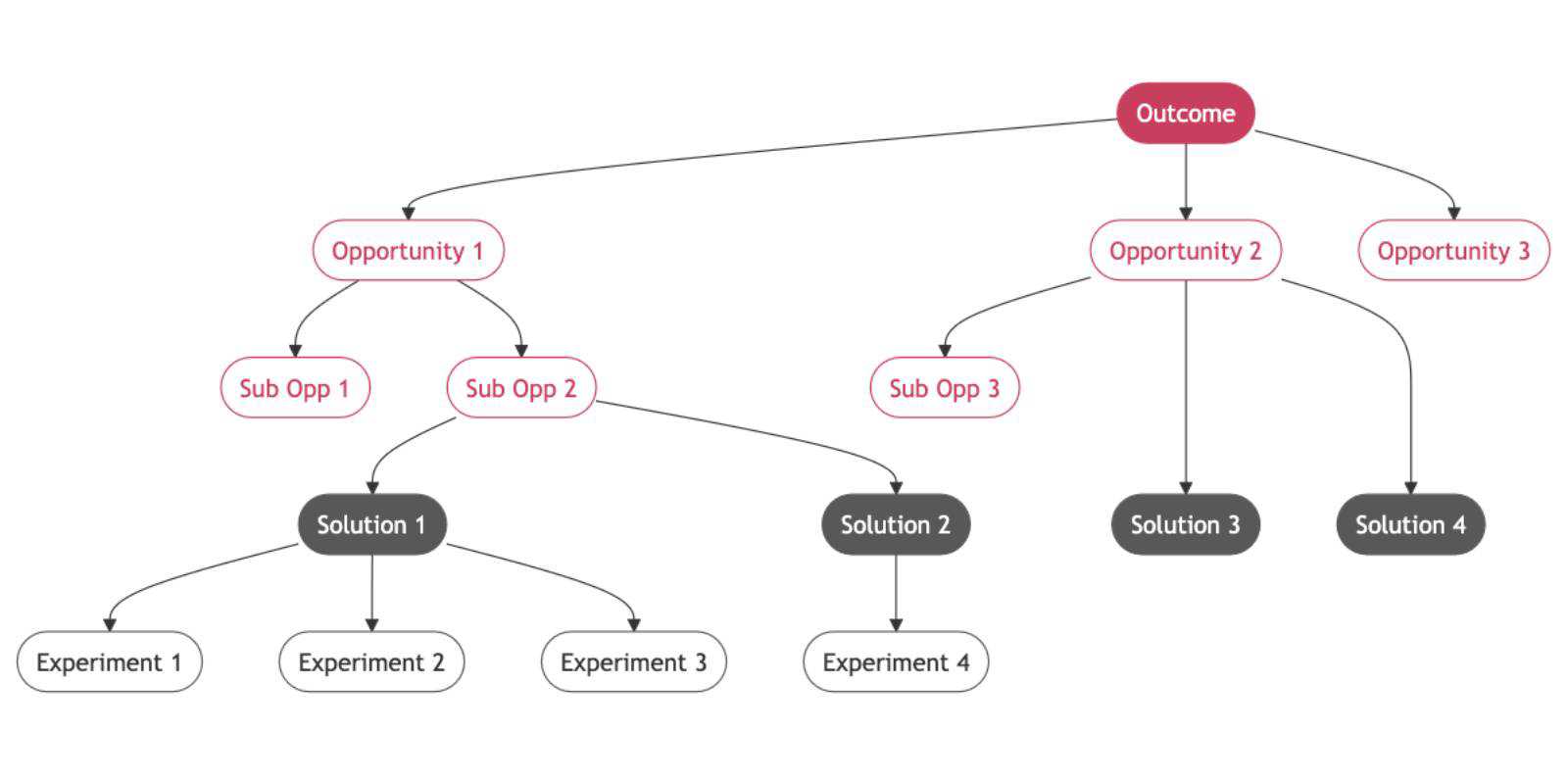
An Oppportunity Solution Tree help visualise your thinking, focus on outcomes rather than solutions, and ultimately make better product decisions.
There are many ways to capture and visualise them, from general purpose diagramming tools like Miro, through to purpose built like Vistaly. And while both of these (and many others) do an excellent job, building diagrams as code is appealing to me as it means that:
- layout is handled outside of the semantic structure of the diagram, so changes don’t require a manual reshuffle of nodes in the tree
- the diagram is accessible in a text format, not locked into a propriatary format
- because it is plain text, I can track changes with version control
- if required, I could programatically build the diagram
Of course, I’m sure there are tools that auto-layout graphs, and most platforms will have APIs for programatically creating diagrams, but I’m easily distracted into a good yak shaving session, so here we are.
Mermaid is a fantastic tool that converts text structured according to a simple DSL into a wide range of diagrams. Mermaid charts and diagrams are also natively supported in Github and Obsidian (amongst many others), so it’s a valuable tool to have at your disposal.
I really like the clean styling of this tree so I’d like to recreate that using Mermaid.
To begin with, I built a basic outline structure of a single outcome, some opportunities and sub-opportunities, solutions, and experiments.
|
|
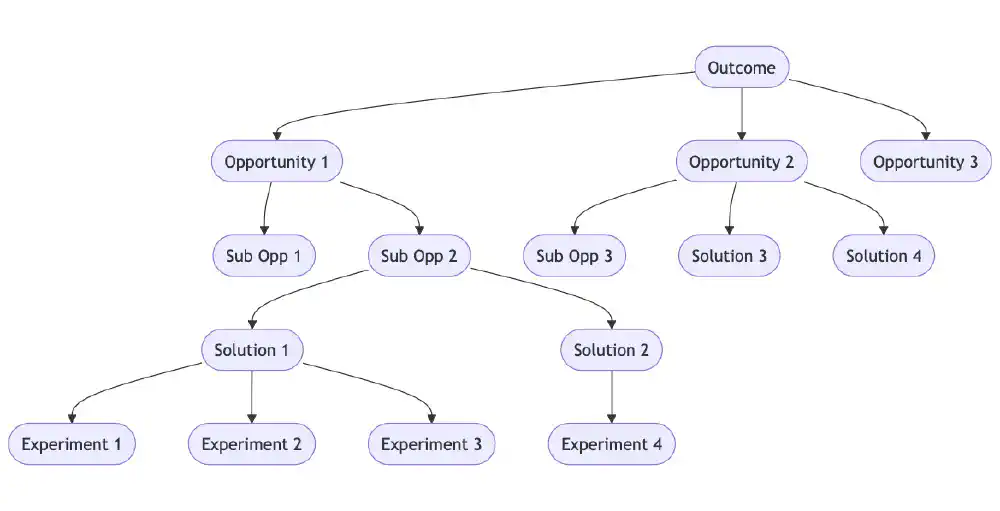
We’ll get to the styling in a bit, but the obvious problem is that on the right hand side of the image, Solution 3 and Solution 4 are on the same level as the sub-opportunities. Mermaid support extending a connector by just adding another -:
|
|
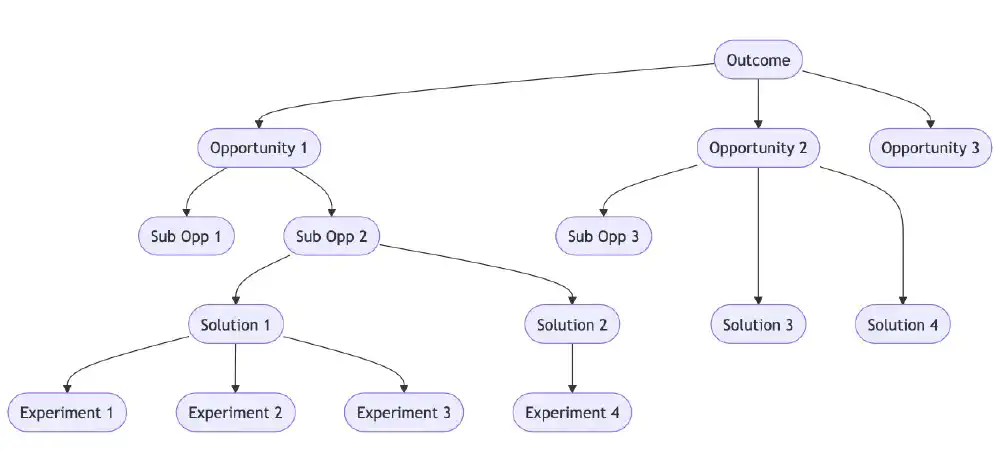
I had also previously tried by keeping all of the opportunities, solutions and experiments in their own sub-graphs (and forcing them into order using invisible connectors), but I wasn’t a fan of the connecting line style, and (as far as I can tell) you cannot remove the sub-graph labels.
|
|
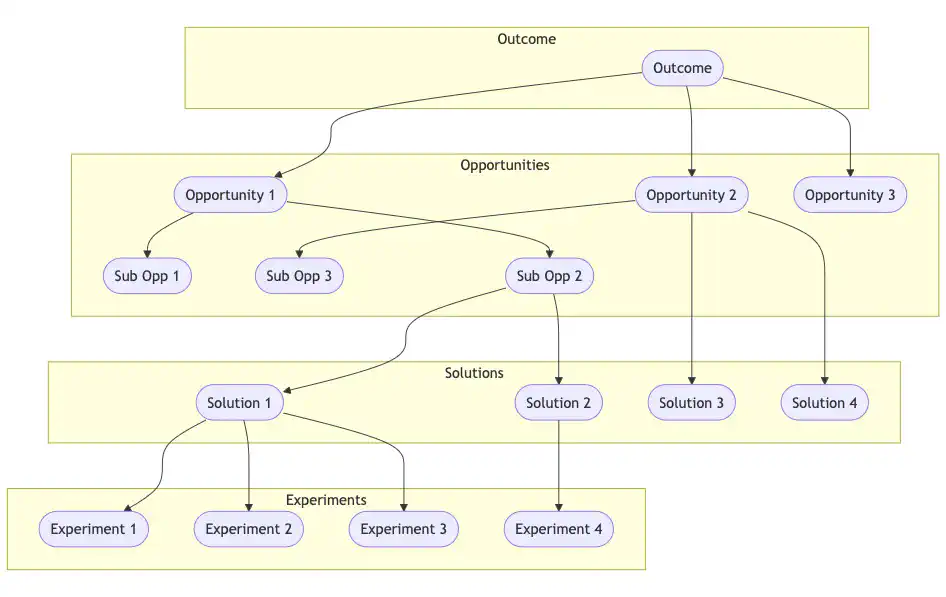
Mermaid also supports creating style classes, and applying those classed to the nodes in the tree. This creates individual classes for the four types of nodes in my tree:
classDef outcome fill:#C83F5E,color:#fff,stroke:#C83F5E
classDef opp fill:#fff,stroke:#C83F5E,color:#C83F5E
classDef sol fill:#585858,stroke:#585858,color:#fff
classDef exp fill:#fff,stroke:#585858
You can then apply the class by appending ::: and the class name to the node:
|
|
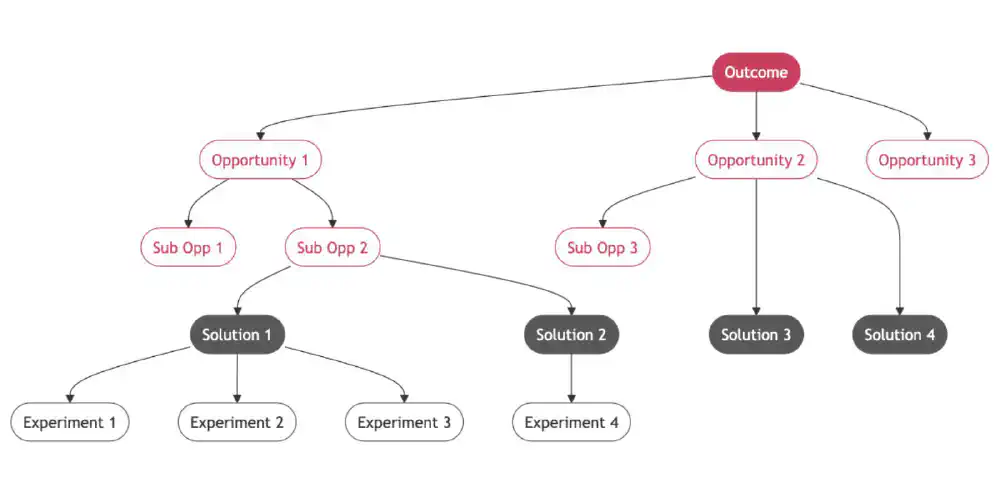
This isn’t going to be the most convenient way to rapidly build a tree, and it remains to be seen how well it holds up with complex trees where a single solution might fulfil multiple opportunities. I am however interested to see if these can be programatically built from existing data sources (like Jira Product Discovery).